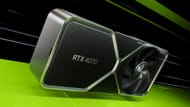The Nvidia RTX 5070 and the RTX 4070 are mid-premium segment graphics cards designed to handle the latest titles at QHD resolutions. With DLSS and frame generation, you can expect playable framerates in virtually any title, even at 4K resolutions. The 70-class offering has consistently ranked among some of the most popular GPUs because of its blend of pricing, strong performance, and versatility.
However, which is the better buy among the Blackwell and Ada Lovelace options? Let's look at what each GPU brings to the table and try to answer that question in this article.
Both the Nvidia RTX 5070 and RTX 4070 are strong 1440p gaming GPUs

The RTX 5070 and RTX 4070 share a similar DNA: at $549, they target the mid-premium market with a mix of budget features such as cut-down video memory buffers, an efficient power design, while bringing strong performance metrics to the table. Let's look at their specs to grasp what each GPU offers.
Read more — Zotac GeForce RTX 4070 Twin Edge Spider-Man limited edition review: Nvidia's mid-range messiah?
Specs comparison
There are several differences between the two 70-class GPUs. To begin with, Ada Lovelace and Blackwell offer widely different architecture, leaving little room for an apples-to-apples comparison between the cards. This means every unit of rendering unit delivers more performance on the 5070, thanks to better packaging and gen-on-gen improvements bundled with the latest generation.
That said, the RTX 4070 isn't far behind the 50 series GPU in terms of hardware specs. On average, you're looking at 5% fewer CUDA, Tensor, and RT cores. Based on these numbers, the 5070 12GB is expected to be about 20-25% faster in raw rasterization performance. With DLSS 4 multi-frame generation, this number could go past 100%.
However, the biggest letdown in the latest video card is the same 12GB video memory buffer. While the newer 50 series card bundles faster GDDR7 VRAM, the bandwidth stays limited to 672GB/s as the bus width is a narrow 192-bit. For some context, the 4070's memory delivers 504.2GB/s bandwidth with its GDDR6X VRAM.
The detailed specs comparison of the two GPUs is as follows:
In terms of pricing, both GPUs have the same MSRP of $549. However, real-world pricing differs. We spotted deals on both cards for ~$700 in retail stores like Amazon and Best Buy.
Performance comparison

In terms of gaming performance, the RTX 5070 12 GB undoubtedly takes the lead. However, we are interested in the percentage margin. While the 5070 relies mostly on DLSS 4 to deliver its advertised performance gains, the better hardware should theoretically help the card push the limits of native performance by a healthy margin, too.
Below is a comparison of framerates achieved by either card in some of the latest titles. The numbers were sourced from the YouTube channel Testing Games.
On average, the RTX 5070 12 GB is about 30% faster than the last-gen alternative. This is a strong gain, given that these numbers are from native 1440p gaming experiences. While the 4070 strongly holds its ground, the new GPU delivers a consistent uplift, bringing it close to the much costlier RTX 4070 Ti Super.
Read more — Nvidia RTX 5060 Ti review: This GPU can play Cyberpunk 2077 Path Tracing at 160 FPS
Since both the RTX 4070 and RTX 5070 are selling for about as much, it doesn't make much sense to buy the older GPU in 2025. However, the last-gen GPU continues to be powerful enough to handle the latest titles without a hiccup. If you're getting a superb deal on the 4070, it can still make some sense over the RTX 5060 Ti and the RX 7700 XT, both of which are slower than the 70-class GPUs.
